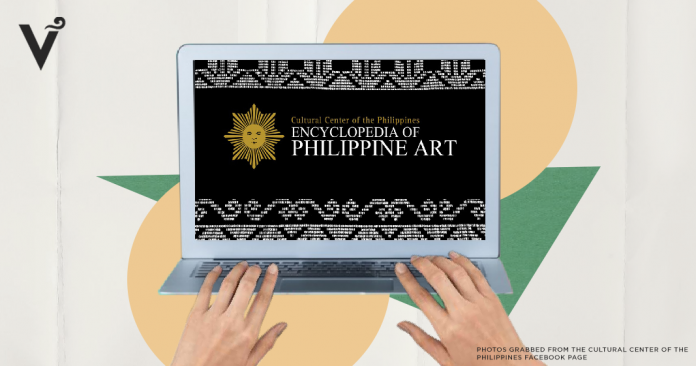THE CULTURAL Center of the Philippines (CCP) launched the digital edition of its Encyclopedia of Philippine Arts on Nov. 18.
The Encyclopedia of Philippine Art – Digitized (EPAD) consists of nine sections, the Peoples of the Philippines and the eight arts, namely, Architecture, Visual Arts, Film, Dance, Music, Theater, Broadcast Arts and Literature.
Deviating from the common alphabetical set-up, each section is further subdivided into Historical Essays, Forms and Types, Aspects, Works and Artists and Organizations.
“The project is an answer to the challenge of contemporary times to access information right away without the constraints of distance and time,” said CCP Vice President and Artistic Director Chris Millado.
Thomasian Edgar Allan Sembrano, area editor for architecture of the EPAD, told the Varsitarian that the architecture volume was the University’s contribution to the encyclopedia.
The first editor was Regalado Trota Jose of the UST Archives, who eventually became senior assistant editor for architecture in the 2018 edition.
Most of the writers in the architecture volume were from the University — architects Clarissa Avendaño, Mary Rajelyn Busmente, Rino Fernandez, Willa Solomon, Ryan Palad, Billy Malacura, Kinna Kwan, Angel Bautista, Bryan Paraiso, Melvin Patawaran and Fr. Milan Ted Torralba.
Sembrano said the EPAD contains updated entries from the 2018 edition including architects’ dates of death, National Artist distinctions, and a Major Works section.
Among the highlights of the EPAD are hundreds of video clips from plays, dance and music performances from the archives of the CCP.
Nicanor Tiongson, editor in chief of the encyclopedia and professor emeritus of the University of the Philippines Film Institute, told the Varsitarian that the Encyclopedia of Philippine Arts is “CCP’s contribution to the creation of the nation as an imagined cultural community.”
“The EPAD highlights the political, economic, and religious forces that attempt to censor or suppress inconvenient truths about abuses perpetrated on people and the environment which artists try to expose,” Tiongson said.
Tiongson shared how an article in the first edition of the encyclopedia had helped the Agta, a subgroup of the Aeta, in fighting for their ancestral domain.
“Filipino [identity as] gleaned from the encyclopedia can never be permanent but must always be defined by Filipinos and for Filipinos at a specific time and place,” he said.
The EPAD used English because it was the primary language used by the editors and writers in scholarly works.
Tiongson expressed a desire to publish a digital encyclopedia in Filipino.
“[A digital encyclopedia in Filipino] ang dream ko, I don’t know if people will agree…I’m not giving up on that. Time [could] come, that it may happen,” he said.
To date, the EPAD website encompasses about 5,000 entries written by scholars from different parts of the country and from various indigenous communities. It is scheduled to be updated twice a year.
The first edition of the EPAD was published in 1994, and the second one in 2018.
Subscription to the EPAD can be obtained through its website, with rates starting from P75 per month to P675 per year. A.N.C. Cruz


0 Comments